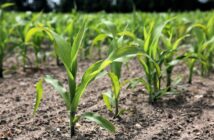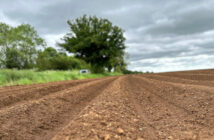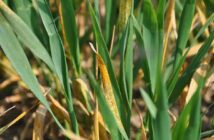Managing stubbles effectively is critical, regardless of which method is used to establish crops, according to the pioneer of Strip Seeding in the UK. Suffolk farmer Jeff Claydon says that getting this aspect right is vital to optimise financial returns and preserve the long-term viability of arable agriculture by minimising weed and pest pressures, while keeping agrochemical input costs in check.
“Current agricultural commodity prices are forcing farmers to consider how they can reduce crop establishment costs substantially. Unfortunately, some are being ‘sold’ the concept of direct drilling purely on the basis of theoretical cost savings, without being made aware of the need for correct stubble management techniques. Yet this is fundamental, and gaining in importance as agrochemicals become more expensive and less effective,” Jeff states.
“Direct drilling offers very significant potential cost advantages. On my heavy land farm, where we have not ploughed for 14 years, it would now cost over £300/ha to establish combinable crops using traditional plough-based techniques, compared with £51/ha for Strip Seeding.
Though the potential benefits are beyond doubt, this technique must be done correctly and encompass an effective stubble management strategy. Using timings of light surface cultivations, strip seeding and wider rotations, we have seen yields increase progressively, by 1t/ha for wheat. Weed and pest issues are also much reduced.
Doing nothing or just moving soil once or twice between harvest and drilling autumn-sown crops is insufficient, and no-till establishment IS deeply flawed. If stubbles are left virtually undisturbed slugs and weeds will multiply, particularly where straw is poorly chopped and distributed, as crops will be thin or non-existent in such areas.
The declining effectiveness and increasing cost of agrochemicals will force farmers to focus on more effective management of stubbles using mechanical solutions. The ‘little and often’ approach is best, the key being to achieve rapid germination of weeds/volunteers so they can be killed using mechanical or chemical methods. Conventional min-till is not ideal because it can move too much soil, slowing germination or burying weed and volunteer seeds so that they germinate after the crop emerges, creating major cost and control issues.
Deeper cultivations present a weather risk, as significant rainfall will reduce the soil to a sticky mess with no structure or ability to support following machinery. The surface can also seal over and become anaerobic, creating issues with water ‘ponding’ or run-off. In extreme cases, full cultivations may be necessary to put right the initial attempt at min-till, in which case weed/volunteer seeds will be buried even more deeply, making control impossible, as well as providing ideal conditions for slugs to survive and thrive.
Immediately after combining we use a 7.5m Straw Harrow which helps to manage trash and crop residues, control slugs and encourage weeds and volunteers to germinate. It covers up to 100ha per day, and because this implement is so fast and cheap to use we repeat this operation every 7 to 14 days when conditions are favourable. So little soil is moved that even if the weather does turn wet the mini-tilth which is created will quickly dry out and allow subsequent operations, either another pass with the Straw Harrow or drilling.
Harder soils may require something a little more aggressive, such as the Claydon TerraStar, a simple, low-cost, low-disturbance shallow cultivator which generates an ideal, high-humidity environment that enables volunteers and grass weeds to germinate quickly. The Straw Harrow is then used to create a wave of surface tilth to break off germinating plants at the one-leaf stage, eliminating the need to spray while ground conditions allow its use.
“Ignoring weeds, volunteers and slugs does not make them go away. It is essential to make them grow and kill them so that they cannot return.



